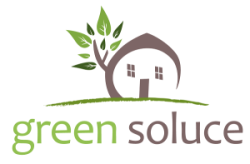[Urban Chronicles 2.0 #05] Financial reporting tools: How to avoid Greenwashing as much as possible?
Laetitia Morere
![[Urban Chronicles 2.0 #05] Financial reporting tools: How to avoid Greenwashing as much as possible?](https://www.construction21.org/data/sources/users/28047/ep-5.jpg)
Today, the financial sector is making increasing use of more responsible economic and financial tools in favour of social and environmental issues. But how can we ensure that public and private actors do not use these new tools only as a marketing strategy? How can we ensure that green finance actually serves responsible projects?
How to define « Greenwashing »?
Until now, "Greenwashing" had been identified as a marketing risk: companies communicated with their target customers using ecological arguments, giving them an eco-responsible image potentially far removed from their business reality.
For green finance, this risk is particularly present when looking at financial instruments such as Green Bonds or Green Loans. At present, there are no precise standards characterising the environmental dimension of the projects financed that can define what a green bond or a green loan is. As the framework for the use of these funds remains rather fluid, it is difficult to determine what these tools can or cannot finance without recourse to eligibility frameworks and reporting tools, in particular impact reporting tools.
Fund eligibility frameworks and reporting, tools to fight Greenwashing
However, there is a reaction from some market participants who want to protect themselves against these risks. Thus, private institutes are setting up voluntary approaches, some of which are beginning to become authoritative in the sector.
This is the case of the International Capital Market Association (ICMA), which set up the Green Bonds Principles (GBP) in 2014. These principles already provide transparency and efficiency in a number of sectors and for different types of projects eligible for the Green Bonds: renewable energies, adaptation to climate change, sustainable water management, etc. Transparency is particularly key: the issuer of the bond must communicate on five mandatory aspects including the use of the product, the assessment of the project in terms of sustainability by agreeing on performance monitoring indicators (KPI), the management of eligible projects planned... Finally, reporting during all phases of the project, as well as a final assessment must confirm its suitability to GBPs. In order to trace emissions and their actual impacts, the projects that have benefited from these funds must be listed and their impacts described qualitatively and quantitatively in a reference document.
Other organization, other tools. In the fight against Greenwashing, the Climate Bonds Initiative (CBI) proposes its Climate Bonds Standard allowing investors to have precise indications on the nature of the issue. Unlike GBPs, the Climate Bonds Standard methodology identifies criteria to be met and objectives to be met for a bond issue to be considered "green". The "Climate Bond Certified" label is then awarded to projects meeting the predefined criteria, in accordance with the objectives of COP 21 in terms of alignment with a 2°C scenario.
Similarly, two organizations, the Loan Market Association (LMA) and the Asian Pacific Loan Market (APLM), have put in place tools to structure the green trend observed in the bank credit market. The approach is very similar to that of GBPs since it also takes place in five phases. Reporting must also be based on concrete criteria that make it possible to quantify the real effects of these credits.
Specialized players in real estate asset reporting
Within the general framework defined by the GBPs, players in the real estate sector in turn propose sector-specific approaches. Among them, GRESB, an association of real estate investors, is committed to assessing the environmental, social and governance (ESG) performance of real estate assets, and more specifically the Green Bonds. Updated at the beginning of May 2018, the GRESB's Green Bonds Guidelines (3rd edition) seek to agree real estate market players on a standard for evaluating green bonds, proposing relevant indicators and measures to legitimise their "green" designation.
To another extent, more and more real estate companies are committing themselves, out of conviction or obligation[1], to CSR reporting. Real estate players can then rely on the general reporting framework set up by the Global Reporting Initiative (GRI), and more particularly on its sector complement relating to real estate and construction, the GRI CRESS. The evaluation methodology is based on a CSR thematic approach proposing intensity indicators on energy, water and greenhouse gases, and an indicator on the certifications and labels obtained.
The methodological approaches presented above allow for greater transparency in the green finance market. Thus, both investors and issuers can rely on clear and didactic reference systems. By anticipating the recognition and application of these methods and principles to the entire financial sector, "sustainable" investment would be ensured and the risk of Greenwashing swept away.
For more information on Green Soluce and our services regarding green finance & real estate, please do not hesitate to contact us.
[1] Following the transposition of the European directive on the declaration of extra-financial performance, supplementing Article 173 of the Energy Transition Act, which itself follows the Grenelle II Act, French companies are subject to the CSR reporting obligation since 1 September 2017.




